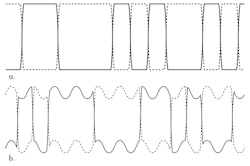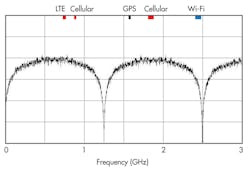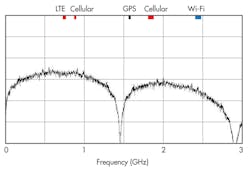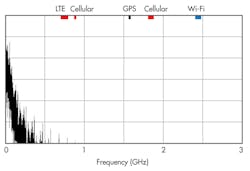Achieve Mutual Transparency For High-Speed Interface Operation
High-speed serial interfaces have revolutionized digital communications. Compared to earlier multi-wire interfaces, they are much smaller to implement and therefore much lower in cost. Modern CMOS technologies have no problem operating at gigabit-per-second (Gbit/s) speeds, enabling this transformation. These interfaces appear to be perfect solutions when a lot of data needs to move in a very short time.
This file type includes high resolution graphics and schematics when applicapable.
Related Articles
- The MIPI M-PHY Reduces Power In Mobile Chip-To-Chip Interfaces
- Physical Layer Test Challenges And Solutions For MIPI Interfaces
- MIPI And PCI Express Join Forces
The small size and low cost of high-speed serial interfaces are particularly valuable for mobile devices that must be small, low power, and lightweight. This is particularly true when the mobile device is not a communicator. Important problems do arise when the mobile device must also communicate with remote networks, whether this communication is receive only (such as a GPS personal navigation device) or both transmit and receive, like smartphones and wireless local-area networks (LANs) such as Wi-Fi.
The problems exist because of the laws of physics. Try as we might to think otherwise, whenever we take electrons from a battery and use them to do interesting things for us, physics tells us that radio signals always will be involved. When we want to communicate with a mobile device, these radio signals are desired. But when we do not want remote communication, these ever-present radio signals are unintentional and can be a problem.
The Solution
To have successful mobile communication products, all of their components must coexist and perform their tasks as they are designed to do. Whatever radio signals are generated unintentionally must not interfere with the intentional radio signals. Also, the intentional radio signals must not interfere with the operation of any other circuits. This is called the principle of mutual transparency. The operation of any circuit is transparent, meaning not interfering, to the operation of any other circuit.
Modern design techniques have many different teams designing separate parts. Each team usually has no knowledge of what its part may be combined with in a final product. Since these teams do not know how to ensure mutual transparency without this information, the standardization community must design interfaces that will provide near certainty of mutual transparency.
This responsibility is not yet widespread, mainly because mutual transparency is not essential to fundamental interface operation, even though it is essential for successful use of that interface. The consideration of mutual transparency necessarily goes beyond the considerations needed for basic interface operation. The MIPI Alliance is one specification development organization that has worked hard toward successful mutual transparency for several years.
Ensuring the likelihood of mutual transparency requires solving two separate problems. The first solution requires the interface to operate even in the presence of the very large radio signals that a mobile unit uses to communicate with a network that is far away. This means that the specification development committee must carefully analyze the effects of what happens on the interface connections when any mobile device transmitter is active. The mobile transmitter will interfere with the interface. Interface properties must be analyzed to make sure the interface will operate normally whether this interference is present or not.
The usual design approach to achieve this tolerance is to use a technique called differential signaling, where a positive version and a negative version of the information are transmitted together. This means that two wires are used, when otherwise you could expect that only one is needed for one copy of the information. Differential signaling is also best for sending high-speed signals over relatively long distances (Fig. 1). Therefore, all high-speed serial interfaces (including USB, PCI Express, and Gigabit Ethernet) use differential signaling. The working groups then need to pay extra attention to the specifications on the interface receiver to ensure that this half of mutual transparency works.
The second necessary solution is harder to achieve. The interface signal, which typically has a size near 0.4 V, must not interfere with a local radio receiver that has a sensitivity of 10 µV (for Wi-Fi) or 1 µV (for GPS). This extreme sensitivity of intentional radio receivers makes this second part of mutual transparency more difficult.
Figure 2 illustrates this issue, showing what the radio signal coming from a high-speed digital interface looks like when the data rate is 1.25 Gbits/s. This unintentional signal has a lot of frequencies. Compared with the frequency ranges of important wireless communication standards, it is apparent that there is a large problem here.
Two Options
The MIPI Alliance offers are two interfaces that have put significant effort into providing mutual transparency, the M-PHY interface and the Radio Frequency Front End Control Interface (RFFE). Each one takes different approaches to solve their particular issues.
M-PHY is a multi-Gbit/s interface, so it has the problem presented in Figure 2. Three major features have been added above and beyond what the interface fundamentally needs to operate: small amplitude, variable data rate, and slew-rate control. These are added to usual good design practices that minimize the amount of the interface signal that can leak into where the sensitive radio input is, providing good isolation.
Figure 3 shows one result of these additional specifications, reducing interference to the local GPS receiver to less than 1% of its original amount from Figure 2.
RFFE takes a different approach. This interface cannot use differential signaling, and the interface signal must be a large 1.8 V. And inherent to its application, this large signal must be located very close to the sensitive radio inputs. Isolation is not as available, so the RFFE working group adopted two additional requirements in its specification: lower bit rate and waveform shaping. Using these techniques, RFFE can keep its unintentional radio signal away from wireless communication frequencies (Fig. 4).
Conclusion
Mutual transparency is a vital feature of interfaces used in mobile communication devices. It is nearly impossible for individual design teams in companies to know how to do mutually transparent designs, so responsibility on what the appropriate requirements must be falls to specification development committees. The MIPI Alliance embraces this responsibility and has published two specifications that pay careful attention to the requirements of mutual transparency, M-PHY and RFFE. Information from present installations of these interfaces shows that the mutual transparency goals are being met.
This file type includes high resolution graphics and schematics when applicapable.
Peter Lefkin earned his bachelor’s degree from Boston University. He currently serves as the managing director and secretary of the MIPI Alliance, a position appointed by MIPI’s Board of Directors. He is responsible for Alliance activities and operations from strategy development to implementation. Prior to this he worked for IEEE as the director of alliance services, director of IEEE conformity assessment program, marketing and business development, as well as COO and CFO of IEEE-ISTO. He has also held positions at Motorola, American National Standards Institute and the American Arbitration Association. He can be reached at [email protected].







